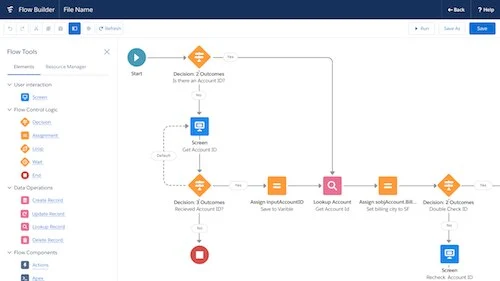In this comprehensive guide, we delve into the intricacies of Salesforce Reports, uncovering their potential to transform your business operations. With a firm grasp on this powerful tool, you can enhance your decision-making, drive efficiency, and gain a competitive edge. Let’s embark on this journey together as we explore Salesforce Reports and equip you with the knowledge to make the most of this invaluable resource.
Understanding Salesforce Reports
Salesforce Reports serve as the backbone of data analysis within the Salesforce ecosystem. These reports provide a structured way to access, analyze, and present your data, allowing you to gain valuable insights into your organization’s performance. To harness the full potential of Salesforce Reports, you need to grasp the fundamentals:
Report Types
Salesforce offers various report types, each tailored to specific data structures and requirements. The most commonly used report types include:
- Tabular Reports: These reports display data in a simple table format, ideal for basic data exploration.
- Summary Reports: Summary reports group data and provide subtotals, making them suitable for analyzing categorized information.
- Matrix Reports: Matrix reports offer a cross-tabulation of data, facilitating in-depth data comparison and analysis.
- Joined Reports: These reports combine data from multiple report types, enabling complex data correlations.
Report Filters
Efficient data analysis hinges on the ability to filter and refine your data. Salesforce Reports allow you to apply various filters to narrow down your focus, such as date ranges, custom fields, and criteria-based filtering. This level of customization ensures that you only analyze the data that matters most to your objectives.
Report Charts and Graphs
Visualizing data is essential for quick insights. Salesforce Reports offer a wide array of chart and graph options to help you illustrate trends, comparisons, and patterns. Utilizing these visual aids can significantly enhance the impact of your reports.
Creating Compelling Salesforce Reports
To outperform your competitors, it’s vital to create compelling reports that stand out. Here are some advanced tips to help you craft reports that command attention:
1. Define Clear Objectives
Before diving into report creation, outline your objectives. What insights are you hoping to gain? What questions should your report answer? Having a clear purpose will guide your report-building process.
2. Optimize Data Organization
Efficient data organization is key to creating insightful reports. Utilize Salesforce’s report folders to categorize and manage your reports efficiently. This ensures easy access and keeps your workspace clutter-free.
3. Leverage Formula Fields
Formula fields in Salesforce allow you to perform calculations on your data directly within your reports. Whether it’s calculating percentages, creating custom metrics, or applying complex formulas, this feature empowers you to derive deeper insights.
graph TD
A[Define Clear Objectives] --> B[Optimize Data Organization]
B --> C[Leverage Formula Fields]4. Dynamic Dashboards
Dynamic dashboards in Salesforce enable real-time data visualization. By embedding your reports into dashboards, you can present dynamic insights to your team or stakeholders, ensuring they always have access to up-to-date information.
Conclusion
In the ever-evolving landscape of business, staying ahead of the competition requires not only access to data but also the ability to derive actionable insights. Salesforce Reports, with their versatility and customization options, are a vital tool for achieving this. By implementing the strategies outlined in this guide, you can harness the full potential of Salesforce Reports and propel your organization to new heights. Don’t miss out on the advantages these reports offer – start optimizing your data analysis today.




